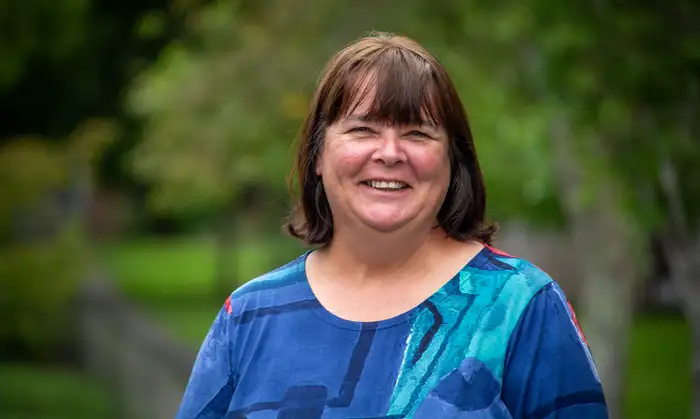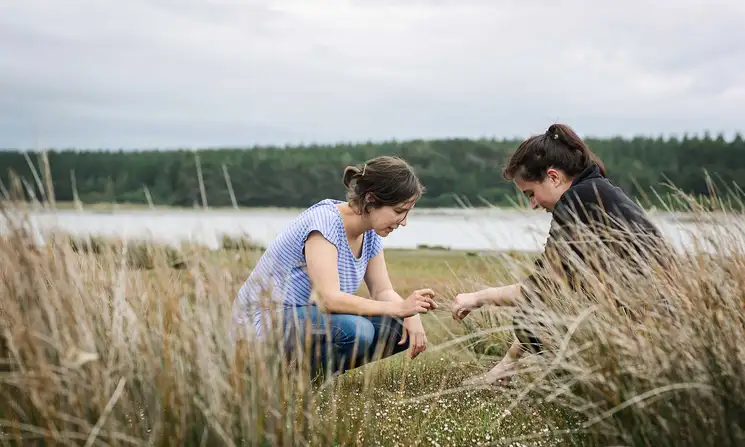The Covid-19 pandemic has had a significant impact on the construction industry in New Zealand, causing skills shortages and disruptions to essential supply chains. At the same time, demand for building has never been higher in an environment where the importance of sustainability and technological innovation is to the fore.
Professor Suzanne Wilkinson from the newly formed School of Built Environment is interested in resilience in the building industry and how it can adapt to challenges. ‘There are problems affecting the construction industry all the time,’ she says. ‘It can be a financial crisis, or overstretched companies going bust and having a knock-on effect on the industry. We had leaky buildings, which had a big impact on quality, cost and the reputation of the industry. Covid is just another thing that has happened.’
Generating new ideas to create a more sustainable and resilient way of building

Professor Suzanne Wilkinson, School of Built Environment
Professor Wilkinson is working to understand more about the building industry’s reliance on international supply chains, and how that has disrupted the sector during the pandemic. For example, there has been a fivefold increase in the cost of shipping, which has had an impact on the entire building sector, although not everyone is affected evenly. ‘We are seeing overreliance on one or two companies to supply us with products that we now can’t get. Big companies get priority because their relationship with suppliers is good and they will continue to use a lot of the suppliers’ products. It’s the builders who don’t have that level of power who are suffering.’
These issues are leading to delays and increased costs, with the potential for flow-on effects on building quality. ‘There is the risk of corners being cut leading to other problems downstream where we suddenly have poorly built buildings. We are recommending how we might build resilience in the sector using locally sourced materials, better training, and less reliance on international products and services.’
Another research project looks at the way in which large-scale public building projects are contracted. Currently, government and council projects like hospitals, schools, roads and civic buildings are put out to tender in a seemingly uncoordinated way, an approach that does not take into account the capacity and capability of the building industry to respond. ‘It doesn’t ask, can this infrastructure actually be built with the industry capacity we have?’ says Professor Wilkinson. ‘There is minimal phasing of projects and the market can become overstocked, leading to delays and other systemic problems, or understocked, leading to downturns in the market and skills losses.’ Professor Wilkinson is co-leading, with Professor Monty Sutrisna and Rod Cameron, a five-year funded programme from the Ministry of Business, Innovation and Employment, CanConstructNZ, to develop a model that helps identify what proposed projects the industry has the capacity to deliver in any given timeframe.
‘Because the industry is facing shocks and stresses all the time, we’re also trying to work out what impact they have on the cost, timing and quality of buildings or infrastructure. Over the period of a long build there are likely to be issues, like currency change or financial pressures, or a flood or electricity failure. If the industry wants the work they will always say they can cope and will try to manage, but we’re trying to get some reality into the system by estimating how much is actually possible.’ The model could be useful for all stakeholders, including government and private developers, in all parts of the industry.
Professor Wilkinson and others in the School of Built Environment are also researching how innovations (such as using more prefabricated or off-site manufactured buildings and building parts), new technologies (such as virtual reality and artificial intelligence), or carbon reduction policies and zero waste might affect the industry. ‘New ideas are being generated to create a more sustainable and resilient way of building, but this is also a change to how things are predominantly done,’ she says. ‘We can model what that might mean for our building industry.’
There is scope, too, for greater use of technology. ‘The industry is still seen as a low-tech place to work, but there is some amazing potential around drones. And it’s now cheap to create a digital building, including a VR [virtual reality] walk-through, as that technology is readily available. You can model a whole building and feel what it would be like before you actually build it. Our team is working with companies at the front end of that work to incorporate some of the more innovative technological features.’
Suzanne Wilkinson
Learn more about the researcher increasing resilience and sustainability in the building industry.

Professor Suzanne Wilkinson
Suzanne Wilkinson focuses on construction management and civil engineering. Suzanne's research interests include construction climate mitigation, construction innovation, disaster management, resilience, and smart cities.








